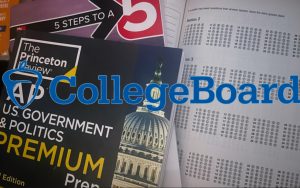The Two Most Important Letters in Sports: A & T
Why Athletic Trainers are needed in our community
September 27, 2022
Athletic Trainers are skilled health care professionals that work in high schools, colleges, or in professional sports. They prevent, examine, diagnose, and treat athletes who become injured on the field. Athletic trainers are well-known in sports, but there are athletic trainers that work in a variety of settings. According to Medical Director of Sports Medicine Tom Pommering says “they act as our “eyes and ears,” keeping the athletes safe and healthy.” He said, “they serve as a valuable member of our team assisting in the treatment and prevention of our athletes’ injuries.”
To become an athletic trainer, a student must graduate with a master’s or bachelor’s degree from a professional athletic training education program. Also, they must pass a comprehensive test administered by the Board of Certification.
Athletic trainers are vital for high school sports. What would happen if an athlete gets injured badly in the middle of a game and there is no one to help them? That athlete would be in immense discomfort, and no one would know how to relieve it. A small study found out that around a third of U.S. high schools have no access to an athletic trainer. The Morgan School is still on the search for an athletic trainer. To fill in temporarily, we have a volunteer medic who sits near the bench to help out with any injuries. According to Athletic Director Meagan Sears, we have nearly all of our home events covered by a local EMT. She is working to provide consistent coverage with Athletic Trainers.
According to the Canyon Athletic Association (CAA), here are the five injury prevention tips that Athletic Trainers recommend.
- Be a multi-sport athlete! The various use of muscles and movement strengthens the body and allows you to heal in different places.
- Use the proper technique of the sport to reduce the risk of potential muscle strain.
- Do not play through the pain. Always tell a coach what is wrong to prevent making the injury worse.
- Before and after practice or games make sure athletes stretch! It strengthens muscle, increases flexibility, and prepares the body for physical activity.
- Take time off and rest. This allows the injury to heal quicker. Also use this time to speak to a professional for advice.
Some teammates have experienced major injuries and can give advice to other teammates who have gotten hurt. For example, if a teammate knows how to wrap ankles from an injury in the past, they would be very helpful if someone hurt their ankle.
As a team and a school, we can help each other out when we get hurt, so everyone can play to the best of their ability.







